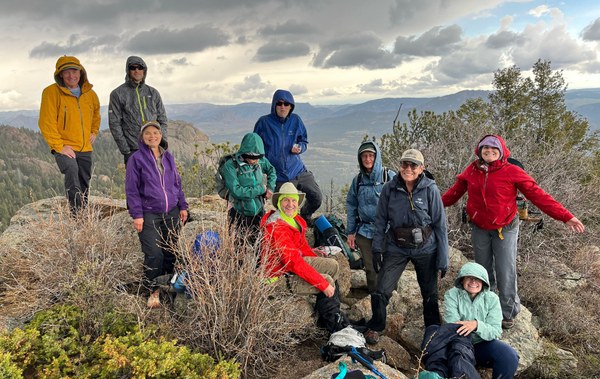The last three incidents submitted have all taken place during hiking-related activities. As the CMC's most common trip activity, it isn't a surprise, but there are some good lessons that can be taken from them. Look for a common trend with all three incidents and email Graham Ottley (graham@cmc.org) for a chance to win a prize and shout out during next month's issue of The Lead.

Incident #1: Little Scraggy TH to Little Scraggy Peak
Date: May 18, 2023
Incident Description: Slip and fall in Rainy Conditions
The group got an extra early start to avoid rain so they could get to the top of Little Scraggy. They had sunshine in the early morning with clouds coming in. They reached the top and it started to sprinkle. They stayed long enough to take a picture and headed down. The rocks were not wet yet, but getting drops on them. The ground was already damp from previous rains. Everyone was being very careful on the way down. We had more capable students staged to help anyone who needed more help. The injured CMC member says he looked to the side instead of paying attention to his feet and misstepped. He fell on dirt and pine needles coming down at the bottom of the boulders on Little Scraggy, took a tumble and grabbed a rock cutting the side of his right hand. The member is a physical therapist with medical experience and had it cleaned and bandaged while the leader was assisting the last students getting down. The assistant leader witnessed the fall. The injured member went to urgent care after he drove home and got stitches.
Analysis:
The group did take precautions to begin their ascent early and communicated the increasing hazard of travel in the terrain with the wet conditions. The leaders did discuss the appropriateness of terrain and the capability of students to handle it. The leaders worked together to manage the group during the incident and appropriate medical care was received by the injured member.
Incident #2: Bobcats Hike - Deer Creek
Date: June 1, 2023
Incident Description:
The group was descending back to the TH. The injured CMC member did not see the tree due to his cap brim and ran into it. Of course, a head wound bleeds a lot but the member said it was a soft hit on a protuberance, not on the full trunk. He remained concious and he declared himself not impaired in any way. His eyes remained clear and pupils equal and reactive. One of the leaders followed him, observing, all the way back to the TH. He was able to drive himself home.
The member had a good first aid kit himself and the rest of us pooled resources to apply a pressure bandage and wrap his head with self-stick tape. The leaders also helped him wash hands and face. The member took ibuprofen before we started hiking again as a precaution against headache. The leaders gave him advice to check when he got home about whether stitches might be needed. The leaders later removed the tree from the trail.
The nine-person roster were well trained and included 2 EMT's, 5 BIM senior instructors / graduates, and seven trip leaders, including the member himself.
Analysis:
The group had cautioned each other all day about branches snapping back when the trail was overgrown, but everyone else walked under the tree except the member, so no one yelled out. A hat brim blocking the wearer's view of an oncoming obstacle is a common event.
Incident #3: Green Mountain by Bailey - Hard way
Date: June 8, 2023
Incident Description:
The Injured member slipped and fell on loose pine needles/dirt as we were descending, and got a deep abrasion on his upper right arm and other slight scrapes. The wound was cleaned and bandaged by a nurse-practitioner on the trip, as well as bandages on other scrapes. Because of the extent and dirtiness of the torn skin, the CMC member sought treatment at an Urgent Care for cleaning of the wound and a CT scan, with no subsequent problems.
Analysis: Extra care and perhaps the use of hiking poles may have lessened or avoided the incident.
 Graham Ottley
Graham Ottley
Add a comment
Log in to add comments.Commonality - all of the incidents took place on the return trip. In the minds of hikers, the goal has been reached. The hikers may feel they can relax, not pay attention the trail as closely, and chat more. Hikers tend to descend at a faster pace, and with less caution. It is often a time when the hiker may begin to feel some fatigue. The need to exercise precautions, communicate trail hazards clearly and use trekking poles may be even greater than on the first part of the trek. Verbal reinforcement may be helpful in reinforcing focus and safe practices.